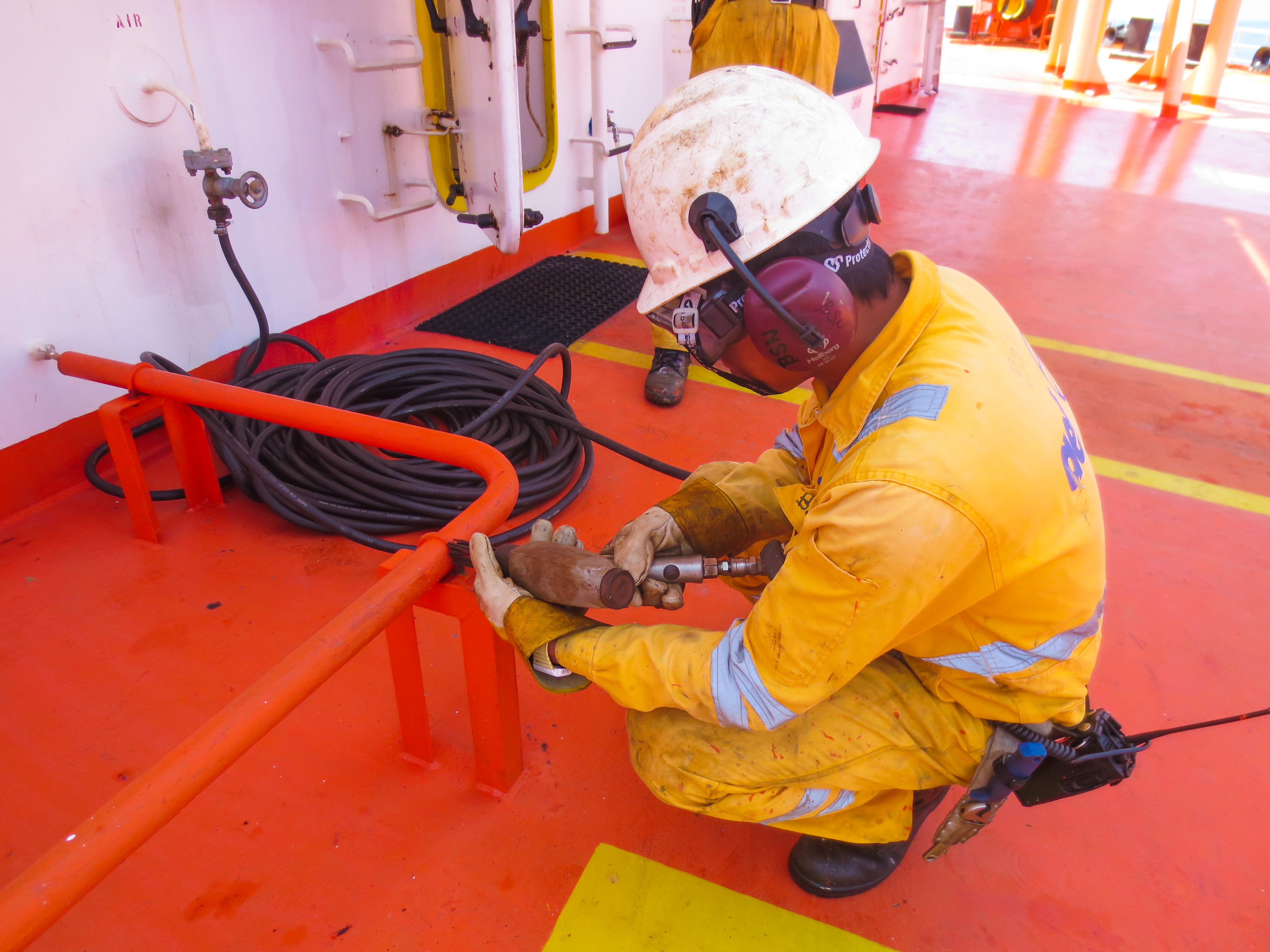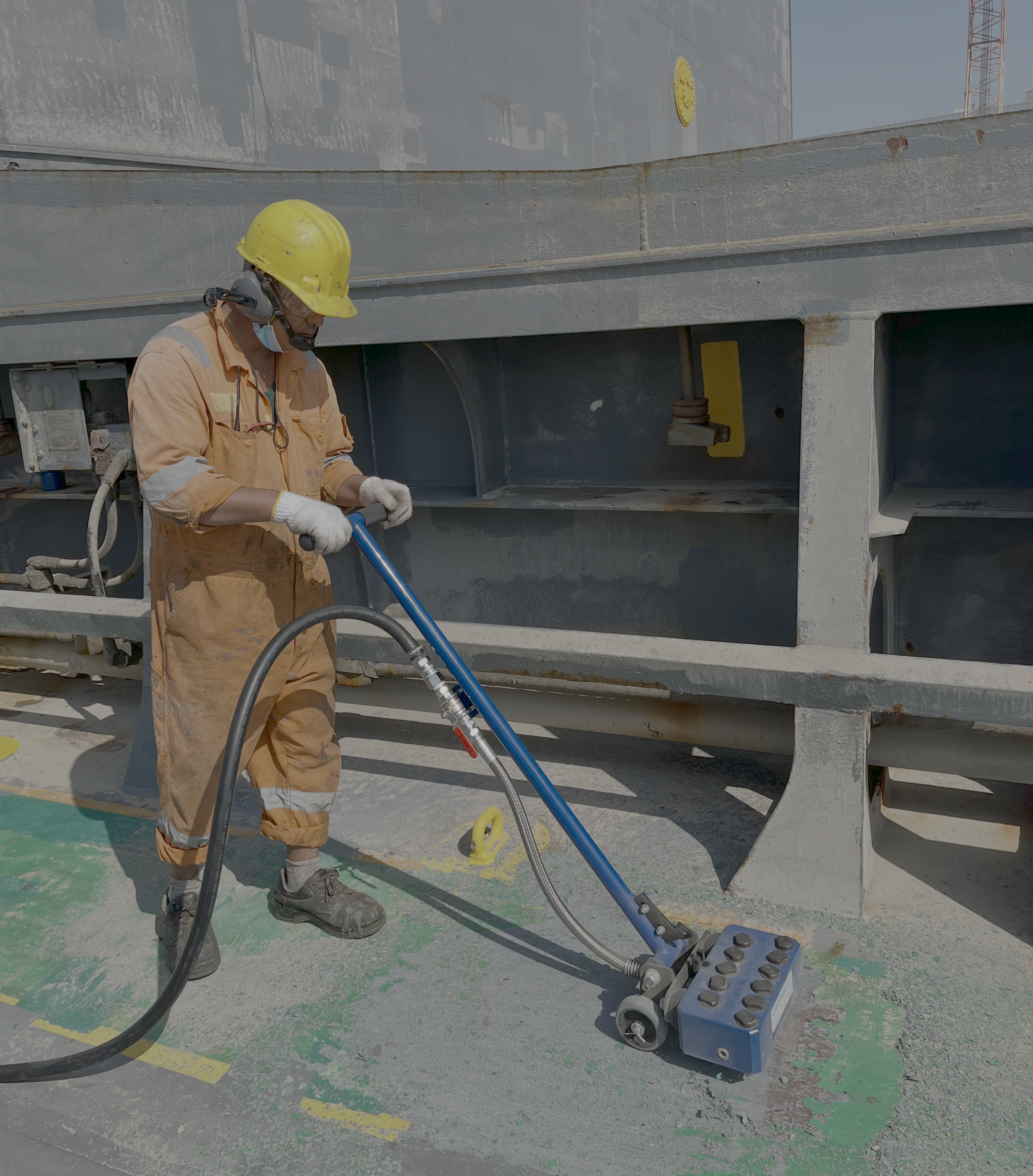
The dangers of hand arm vibration syndrome
HAVS is a disabling condition commonly experienced by users of both handheld and hand-controlled vibrating power tools. These include diesel, electric, and compressed air tools used across many industries. The condition is formally recognised as an occupational health risk by agencies including the US National Institute of Occupational Safety and Health (NIOSH).
HAVS is caused by vibrations being transmitted from the fingers and hands up through the arms, constricting arteries and impairing blood circulation. As the condition progresses it can cause injury to nerves, muscles, and joints. Along with the related conditions Vibration-induced White Finger (VWF) and Carpal Tunnel Syndrome (CTS), HAVS is associated with what is medically termed Raynaud’s phenomenon.

Figure 1: Raynaud's phenomenon
Any seafarer who regularly uses rotating/puncture air tools for onboard tasks such as grinding and to remove rust, scale, or paint from metal surfaces runs the risk of developing HAVS. (Such tasks are often performed in association with welding, although specialized tools used for welding and hot cutting do not usually generate harmful levels of vibration.)
The regular use of power tools combined with fitting, where a certain position or repetitive action must be maintained for a long period, can also trigger CTS.
What to look out for
Temporary tingling or numbness in the fingers during or 10-20 minutes after use of a power tool is not considered HAVS. Symptoms that are present the entire time while using the tool and for a prolonged time afterwards may be an indication of early-stage HAVS. Even early-stage HAVS can make operators less capable of handling tools with precision.
Many people experience a reduction in symptoms if they stop using such tools. If this happens early enough, symptoms may completely reverse. Symptoms can become more severe with continuing exposure to vibration. This could happen after only a few months but in most cases will take a few years. Severe chronic symptoms cannot always be reversed, and continued power tool use can result in permanent damage.

Figure 2: Seafarer using a vibrating power tool onboard
The severity of HAVS is diagnosed clinically using a known as the Stockholm Workshop Scale, which grades both vascular and sensorineural symptoms into Stages I, 2, or 3.
Vascular symptoms:
- Blanching of one of more fingers especially in cold and wet weather
- Pain and flushing of the fingers on recovery
Sensorineural symptoms:
- Numbness or tingling in the fingers
- Reduced sensitivity of fingers to temperature, touch, and pain
- Loss of hand strength and difficulties performing day-to-day tasks
- Pain in hands and/or wrists
- Numbness in the hands and underarms
As of today, there are limited medical treatments to alleviate full-blown HAVS, however it can be prevented by taking common-sense precautions to protect against exposure to high vibrations.
HAVS Calculator
The UK Health & Safety Executive's HAVS calculator is designed to help users and employers (in the maritime context, vessel supers, fleet managers, etc.) assess and manage the risk of HAVS by calculating the vibration exposure level of power tools or processes. The calculator is a Microsoft Excel spreadsheet file that can be downloaded here.
The recommended level of exposure to vibrations during a single workday depends on the vibration values of the tool, and for how long it is used. Values are expressed as acceleration measured in m/s². If a tool has a vibration value of 2.5m/s² or over, the supplier/manufacturer must share this information.
The calculator uses the vibration value and exposure time to provides estimates on time to reach Exposure Action Value (EAV) – the level above which employees should be informed of the risks to health and risk-reduction measurements considered – and Exposure Limit Value (ELV), the maximum amount of vibration an employee may be exposed to on a single day, with necessary measures required to reduce risk.
Key parameters influencing the risk of developing HAVS
The quality of equipment and tool maintenance are the two largest influencing factors affecting vibration levels. A poorly maintained and low-quality tool will vibrate more than a good quality, well-maintained tool.
All the high-quality products in Wilhelmsen Ships Service's air tools solution portfolio – including impact wrenches, deck planers, deck scalers, needle scalers, scaling hammers, chisel scalers, drills and angle/die grinders – are properly designed for safe operation. Every tool is complete with a standardized range of consumables available alongside comprehensive instruction and maintenance manuals.

Figure 3: Unitor Deck scaler DSH-PRO 11 in action
In terms of compatibility, all attachments (discs, drums, needles, etc.), consumables, and spares are designed to match each tool for safe use. We also advise the use of maintenance logs to record and track maintenance. In addition, our customer support function is on hand in each geographical region to provide technical advice.
Guidelines to reduce HAVS risk
Understand and adhere to operating limits:
- Be aware of the exposure limits of tools and take breaks before reaching these limits.
- Rotate tasks among team members to minimize prolonged exposure.
- Keep fingers moving during breaks to improve blood circulation.
Proper tool usage:
- Check the condition of the tool before starting the job. Ensure it is maintained according to manufacturer guidelines, with a planned maintenance schedule in place.
- Use tools with low vibration values, and as close to 2.5 m/s² as possible.
- Ensure you have the necessary training and have reviewed instructions before use.
- Let the tool perform the work. Avoid excessive gripping or pushing.
Protective gear:
- Consider using vibration-reducing gloves, but be aware of their limitations in reducing the risk of developing HAVS – unless the supplier can document that they reduce the same vibration frequency as the given tool.
- Keep hands warm and dry to maintain blood circulation; use gloves that allow for a good grip without being too thick.
Health awareness:
- Learn to recognize HAVS symptoms and seek medical advice if you experience them.
- Avoid smoking, as nicotine can reduce blood circulation, increasing the risk of HAVS.
Sources
https://www.healthline.com/health/workplace-health/vibration-white-finger#symptoms
https://www.cdc.gov/niosh/docs/83-110/default.html
https://www.hse.gov.uk/welding/health-risks-welding.htm
https://www.hse.gov.uk/vibration/hav/regulations.htm